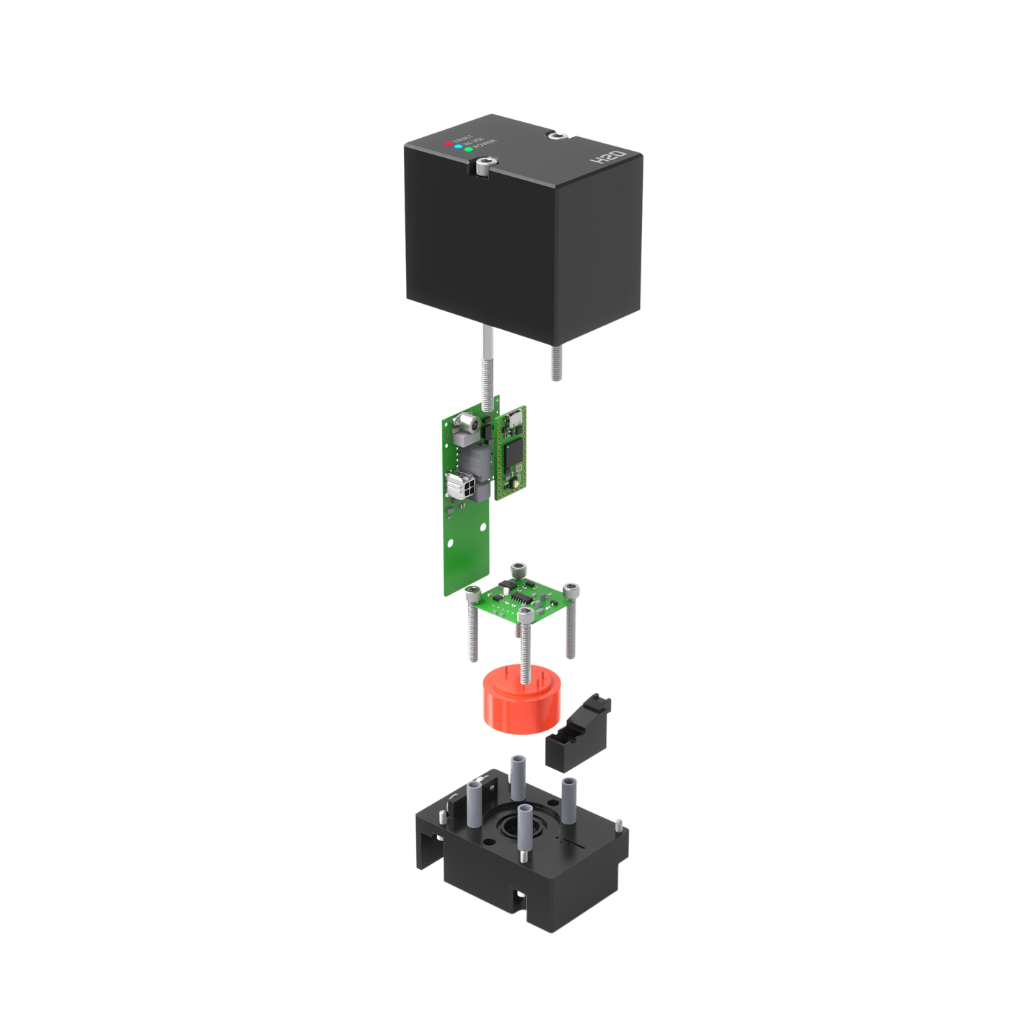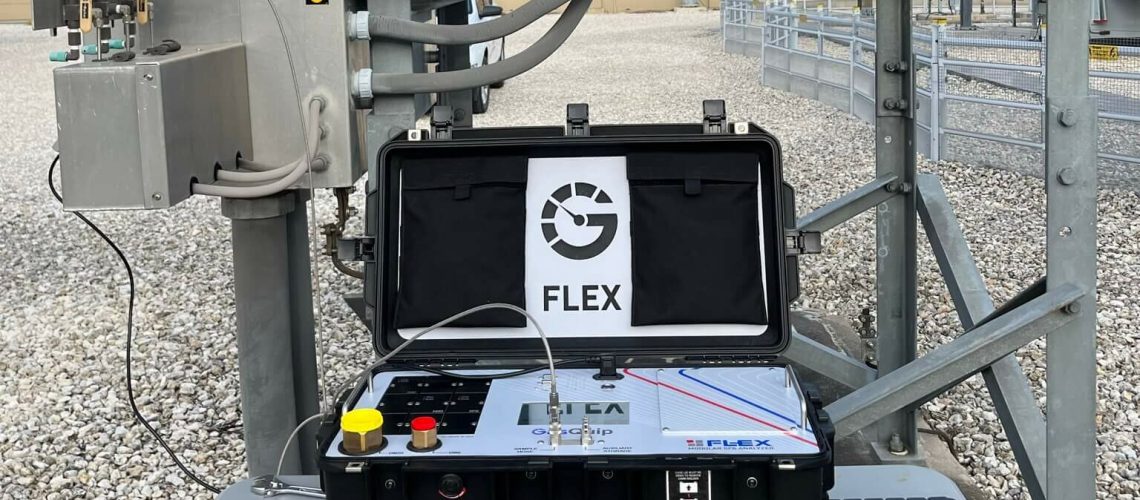Problem 1: Calibration Wait Times
Prior to starting development on the FLEX, the feedback we got most from customers about SF6 analyzers was having to send them back to the manufacturer for calibration. In theory, it’s an easy process and you get your device back fully calibrated in a few weeks. In practice, it was always a different story. Problems include having to coordinate the return, unexpected costs or price gouging, waiting months to get equipment back, or equipment being damaged in transit to or from the calibration lab. This makes for a very unpleasant experience for both the manufacturer and customer.
Solution: Sensor Modules
The FLEX was designed around a 3×3 sensor module manifold in which the sensors for each gas type are housed. It does not matter which location each sensor is plugged into, and it takes less than a minute to swap in a new pre calibrated sensor. We even provide the torque wrench so that installation is as foolproof as possible. Now instead of shipping the FLEX back to us, we will send you pre-calibrated sensor modules that are ready to go. Not only that, but if you decide you want to add another type of gas sensor, or a new standard arrives years down the road that requires a new contaminant or insulating gas to be measured, you just need to pop in a new module to upgrade.

Problem 2: Batteries
Another issue customers are having with SF6 analyzers are the batteries. Again, in theory they would always work, hold charges, and be great for a portable device. In reality, customers reported having issues with batteries not holding charges, wearing out over time, causing problems with shipping due to hazardous goods classification, and tests being affected when the battery was running low.

Solution: Remove Battery
For the FLEX, we realized that the vast majority of our customers were testing SF6 insulated equipment inside substations, in which there are plenty of outlets to plug in devices. And 9 times out of 10, they also have adapters in their trucks to plug devices into too. So we elected to remove the extra weight and ditch the headaches of having an onboard battery.
Problem 3: Humidity Tests Reading Higher Than Expected
If you have operated an SF6 analyzer before, you probably know that it can sometimes take up to 2-3 tests before you can trust the results. The reason for this is that there is residual moisture that tends to creep into the plumbing of analyzers as they sit on the shelf. Moisture can enter through wet hoses, regulators, fittings, or anything else that has encountered ambient air or sweaty hands. After a few tests, enough gas has passed through the system to carry off some of that residual moisture and effectively “dry out” the system. The area that affects the sensors reading the most is obviously where the sensor is mounted, which tends to be a “deadhead” area where moisture can build up at. The issue is that you never know if the system has completely dried out, and you are wasting time and gas in order to get a dry system.
Solution: Heated Sensor & System Dry Out
The FLEX has a built-in function called “Dry System” that pulls a vacuum on all the internal components & sensor modules to help remove that moisture. Additionally, we use an advanced capacitive polymer sensor inside our H2O module that has a built-in heater. This heater runs during the system dry out, and prior to sample tests, which also aids in removing residual moisture in the system.

Problem 4: Operating Devices in Direct Sunlight
This is an obvious one, but customers complained to us that they couldn’t see the screens of their SF6 analyzers (and other power test equipment) in direct sunlight.

Solution: Sunlight Readable Display & High Contrast Color Scheme
The FLEX’s 7” uses a sunlight readable display, and an interface color scheme that is specially designed for making it easier to read in the sunlight. It’s truly one of those things you have to see for yourself.

Problem 5: Bag Access & Maintenance
The last major complaint we heard from customers was a lack of ability to access the internal gas storage bag for maintenance. What’s ironic is that the reason customers wanted to access the bag is that they were failing in the field so consistently. Most analyzer bags use a poly style plastic bag that is great for not trapping moisture, but terrible against not cracking in cold weather, and not leaking over time. Think of an oversized Ziploc bag with a plastic fitting attached to it, not exactly rugged.
Solution: Bag Access Panel & Better Materials
The FLEX has a bag access panel built into the top off the device. If you remove the 4 screws holding down the panel, it reveals a reinforced PVC bag with a metal fitting that CAN stand up to constant pressurization & depressurization that an analyzer will endure. Removing the bag is as easy as disconnecting one nut and pulling the bag out.

Haven’t seen the FLEX yet? Check it out HERE

